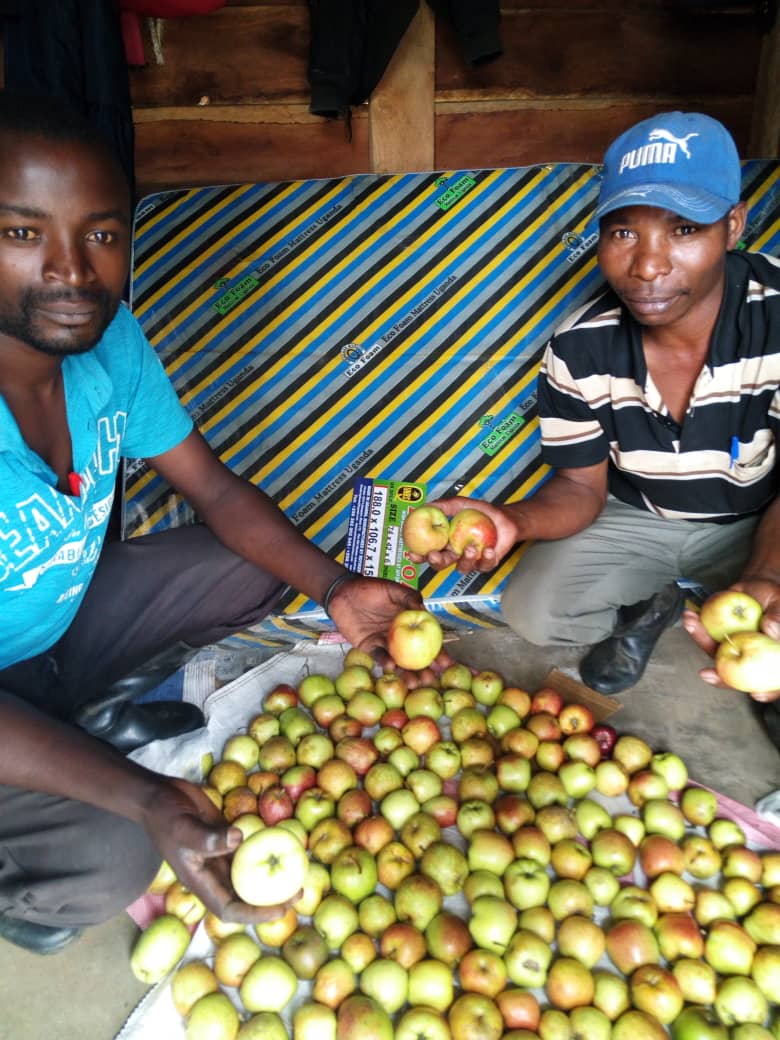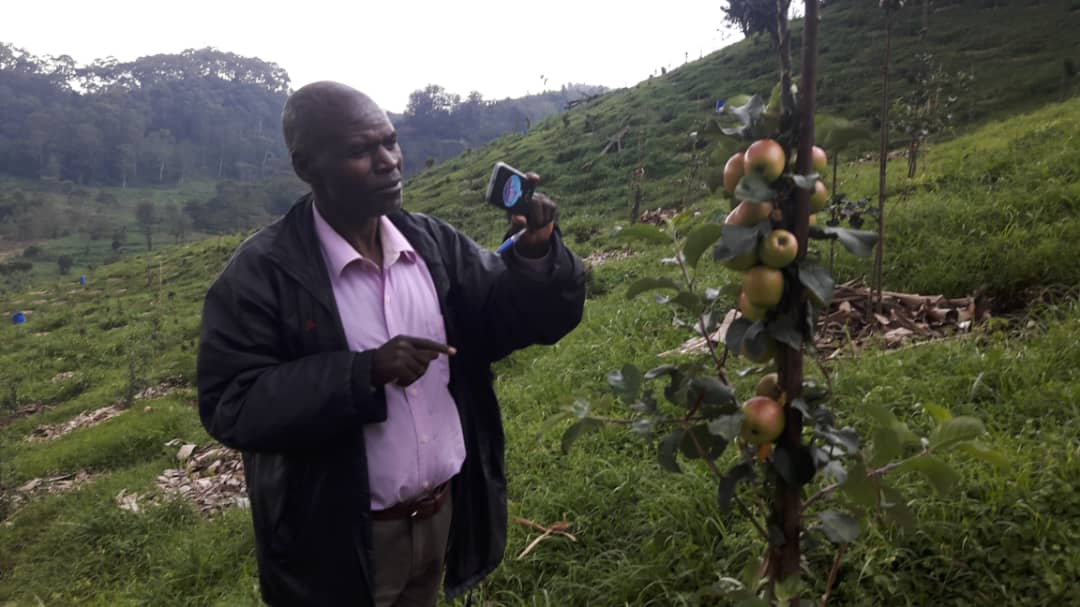Can Apples Really be Grown in the Tropics?
 |
It is a shock to many people that yes, apples can be grown in a tropical climate, and have been grown by the millions for decades. This goes against the conventional wisdom that apples need between 800-1,000 hours below 7° C. (45° F.) in order to break dormancy and set fruit. But experience has shown that using tropic apple culture methods can fool the tree into thinking that it's chilling-hour needs- whatever they may be- have been satisfied and it will then blossom and fruit. You still must be choosy about which varieties to plant, and the tree will act much different than in a cold climate, but the end result is crisp, juicy, tasty apples. |
It was then assumed that apples could be grown only in the highland tropic areas that receive quite a bit of cold weather, but not down in the lowlands with the heat and humidity.
However a three-year study¹ in Nigeria and Southwest Cameroon proved that this was wrong. In that study 18 localities in Nigeria and 8 in Southwest Cameroon comprising both cool highlands and hot tropic lowlands were selected and planted with the apple variety Anna and a pollinator. Several different cultural methods such as planting density and irrigation were employed at each location and an evaluation of the fruit pack-out was done at the completion.
 |
Researchers were surprised to find that some of the warmer lowland areas produced well, and the limiting factor was not temperature, but excessive rainfall. Heavy rains during blossoming prevented pollinating insects from flying, knocked the flower petals and young fruitlets off the tree, and led to problems with foliar disease such as powdery mildew and scab. Better results were obtained with areas with less rainfall but with the potential for irrigation. |
So when people ask if apples can be grown in their area, I suggest to plant a test plot of 10-20 varieties to see how they perform. Soil and rainfall conditions can vary widely in a small area, and so all the variables cannot be fully known until you stick some trees in the ground and see what happens. Do not believe anybody who tells you it cannot be done unless they have actually tried it (I used to believe them for years, and they were wrong, very wrong).
However do realize that any time you are planting a new crop in an area it should be considered entirely speculative, and you should be prepared to absorb a 100% loss. Often this happens several times until the right methodology is found that fits your unique set of challenges and growing conditions.
There is always some pest, disease, or soil deficiency to deal with; even growers in cold climates suffer losses and very often have years when they have a poor or no harvest. The cold winter may kill the trees to the ground, starving mice and rabbits chew the bark off the trunk under the snow, the blossoms freeze in late spring frosts, caterpillars eat all the leaves, deer eat the apples, hornets eat the apples and strip the bark off. As these cold-climate growers watch their trees fall over from an ice storm that coats every twig with 2 cm of ice, they may longingly look at your tropic apple orchard and proclaim you to be the wiser grower and sell their orchard to come farm in Africa!
So come and explore the world of tropic apple growing. You can learn much more through our book and monthly seminars on tropic apple culture.
¹ Apple Production in Strictly Tropical Zones: First Observations in Nigeria, Alum & Magherini, 2001
Home | Order Form | Contact Us
©2021 Kuffel Creek